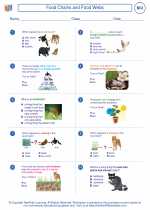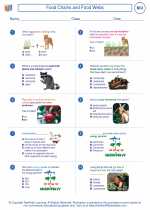Food Chains and Food Webs -> grassland
Grassland Ecosystem
A grassland is a biome characterized by grasses, herbs, and shrubs. It is found on every continent except Antarctica and is known by different names such as prairie, savanna, and steppe depending on the region.
Types of Grasslands
There are two main types of grasslands: tropical grasslands, also known as savannas, and temperate grasslands. Tropical grasslands are found in the warm climates of Africa, South America, and Australia, while temperate grasslands are found in colder regions such as North America, Eurasia, and Argentina.
Climate
Grasslands typically have a dry climate with seasonal rainfall. The lack of trees allows for strong winds to blow across the plains. The temperature can vary greatly between summer and winter, and fires are common in grassland ecosystems.
Flora and Fauna
The dominant vegetation in grasslands is grass, with a variety of species adapted to different moisture levels and soil types. Trees are scarce, but shrubs and herbaceous plants can be found. Animals in grasslands include large herbivores like bison, zebras, and antelope, as well as predators like lions and wolves. Insects, birds, and rodents are also abundant in grassland ecosystems.
Human Impact
Grasslands are often converted for agricultural use, leading to habitat loss and fragmentation. Overgrazing by domestic animals can also degrade grassland ecosystems. Conservation efforts are important to protect the biodiversity of grasslands and maintain their ecological balance.
Study Guide
- What are the two main types of grasslands?
- Describe the climate of grassland ecosystems.
- What are the dominant vegetation and animal species found in grasslands?
- How does human activity impact grassland ecosystems?
◂Biology Worksheets and Study Guides High School. Food Chains and Food Webs

 Worksheet/Answer key
Worksheet/Answer key
 Worksheet/Answer key
Worksheet/Answer key
 Vocabulary/Answer key
Vocabulary/Answer key
 Vocabulary/Answer key
Vocabulary/Answer key
